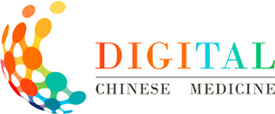Abstract:
Objective To evaluate the antibacterial potential of bioactive compounds from Persicaria hydropiper (L.) (P. hydropiper) against bacterial virulence proteins through molecular docking (MD) and experimental validation.
Methods Six bioactive compounds from P. hydropiper were investigated: catechin (CAT1), hyperin (HYP1), ombuin (OMB1), pinosylvin (PSV1), quercetin 3-sulfate (QSF1), and scutellarein (SCR1). Their binding affinities and potential binding pockets were assessed through MD against four bacterial target proteins with Protein Data Bank identifiers (PDB IDs): topoisomerase IV from Escherichia coli (E. coli) (PDB ID: 3FV5), Staphylococcus aureus (S. aureus) gyrase ATPase binding domain (PDB ID: 3U2K), CviR from Chromobacterium violaceum (C. violaceum) (PDB ID: 3QP1), and glycosyl hydrolase from Pseudomonas aeruginosa (P. aeruginosa) (PDB ID: 5BX9). Molecular dynamics simulations (MDS) were performed on the most promising compound-protein complexes for 50 nanoseconds (ns). Drug-likeness was evaluated using Lipinski's Rule of Five (RO5), followed by absorption, distribution, metabolism, excretion, and toxicity (ADMET) analysis using SwissADME and pkCSM web servers. Antibacterial activity was evaluated through disc diffusion assays, testing both individual compounds and combinations with conventional antibiotics cefotaxime (CTX1, 30 μg/disc), ceftazidime (CAZ1, 30 μg/disc), and piperacillin (PIP1, 100 μg/disc).
Results MD revealed strong binding affinity (ranging from – 9.3 to – 5.9 kcal/mol) for all compounds, with CAT1 showing exceptional binding to 3QP1 (– 9.3 kcal/mol) and 5BX9 (– 8.4 kcal/mol). MDS confirmed the stability of CAT1-protein complexes with binding free energies of – 84.71 kJ/mol (5BX9-CAT1) and – 95.59 kJ/mol (3QP1-CAT1). Five compounds (CAT1, SCR1, PSV1, OMB1, and QSF1) complied with Lipinski's RO5 and showed favorable ADMET profiles. All compounds were non-carcinogenic, with CAT1 classified in the lowest toxicity class (VI). In antibacterial assays, CAT1 demonstrated significant activity against both gram-positive bacteria Streptococcus pneumoniae (S. pneumoniae), S. aureus, and Bacillus cereus (B. cereus) zone diameter of inhibition (ZDI): 10 – 22 mm and gram-negative bacteria Acinetobacter baumannii (A. baumannii), E. coli, and P. aeruginosa (ZDI: 14 – 27 mm). Synergistic effects were observed when CAT1 was combined with antibiotics and the growth inhibitory indices (GII) was 0.69 – 1.00.
Conclusion P. hydropiper bioactive compounds, particularly CAT1, show promising antibacterial potential through multiple mechanisms, including direct inhibition of bacterial virulence proteins and synergistic activity with conventional antibiotics. The favorable pharmacological properties and low toxicity profiles support their potential development as therapeutic agents against bacterial infections.









 下载:
下载: